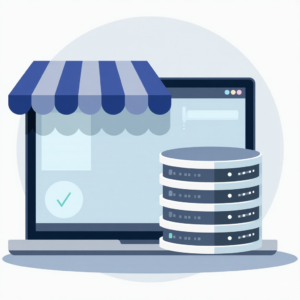
Introduction to CodeIgniter eCommerce Module Integration
CodeIgniter is a popular PHP framework used for building dynamic web applications. When it comes to creating an eCommerce platform, integrating a suitable module is essential. This article will guide you through the best practices for CodeIgniter eCommerce module integration, ensuring a seamless and efficient online shopping experience for your customers.The first step in integrating an eCommerce module is to choose a suitable one that aligns with your business needs. Some popular eCommerce modules for CodeIgniter include OpenCart, Magento, and WooCommerce. Each module has its strengths and weaknesses, and selecting the right one is crucial for a successful integration.
Planning and Preparation
Before starting the integration process, it’s essential to plan and prepare your CodeIgniter application. This includes setting up a clean and organized code structure, configuring the database, and ensuring that all necessary libraries and dependencies are installed.A well-planned architecture is vital for a successful integration. Take the time to review your module’s documentation and understand its requirements, such as database schema, API endpoints, and payment gateway integrations.Additionally, consider the scalability and performance of your application. A well-optimized application will ensure a smooth user experience, even with a large volume of traffic and transactions.

Module Installation and Configuration
Once you’ve planned and prepared your application, it’s time to install and configure your chosen eCommerce module. This typically involves uploading the module files to your server, configuring the database settings, and setting up the module’s core functionality.Follow the module’s documentation carefully, and ensure that all necessary configurations are set up correctly. This includes configuring payment gateways, shipping options, and tax settings.It’s also essential to test the module thoroughly, ensuring that all core functionality works as expected. This includes testing payment processing, order management, and inventory management.
Customization and Extension
Once the module is installed and configured, you may need to customize and extend its functionality to meet your specific business needs. This can include developing custom plugins, themes, or modules to enhance the user experience.CodeIgniter provides a flexible and modular architecture, making it easy to extend and customize the eCommerce module. You can use CodeIgniter’s built-in hooks system to modify the module’s behavior, or create custom controllers and models to add new functionality.When customizing or extending the module, ensure that you follow best practices for coding and testing. This includes using version control systems, writing unit tests, and following the module’s coding standards.
Security and Performance Optimization
Security and performance optimization are critical aspects of any eCommerce application. Ensure that your application is protected against common web vulnerabilities, such as SQL injection and cross-site scripting (XSS).Use CodeIgniter’s built-in security features, such as input validation and sanitization, to protect against user-inputted data. Additionally, consider using a web application firewall (WAF) to detect and prevent malicious traffic.For performance optimization, use caching mechanisms, such as CodeIgniter’s built-in caching system, to reduce the load on your database and improve page load times. Additionally, consider using a content delivery network (CDN) to distribute static assets and reduce latency.
Testing and Deployment
Before deploying your eCommerce application, it’s essential to test it thoroughly. This includes testing the module’s core functionality, as well as any customizations or extensions you’ve made.Use CodeIgniter’s built-in testing framework to write unit tests and integration tests for your application. Additionally, consider using automated testing tools, such as Selenium, to test the application’s user interface.Once you’ve tested and validated your application, it’s time to deploy it to a production environment. Ensure that you follow best practices for deployment, such as using version control systems and continuous integration tools.
Conclusion
Integrating an eCommerce module with CodeIgniter requires careful planning, preparation, and execution. By following best practices for module installation, customization, and security optimization, you can create a seamless and efficient online shopping experience for your customers.Remember to test your application thoroughly and optimize its performance for a smooth user experience. With the right approach, you can create a successful eCommerce platform that drives business growth and customer satisfaction.

